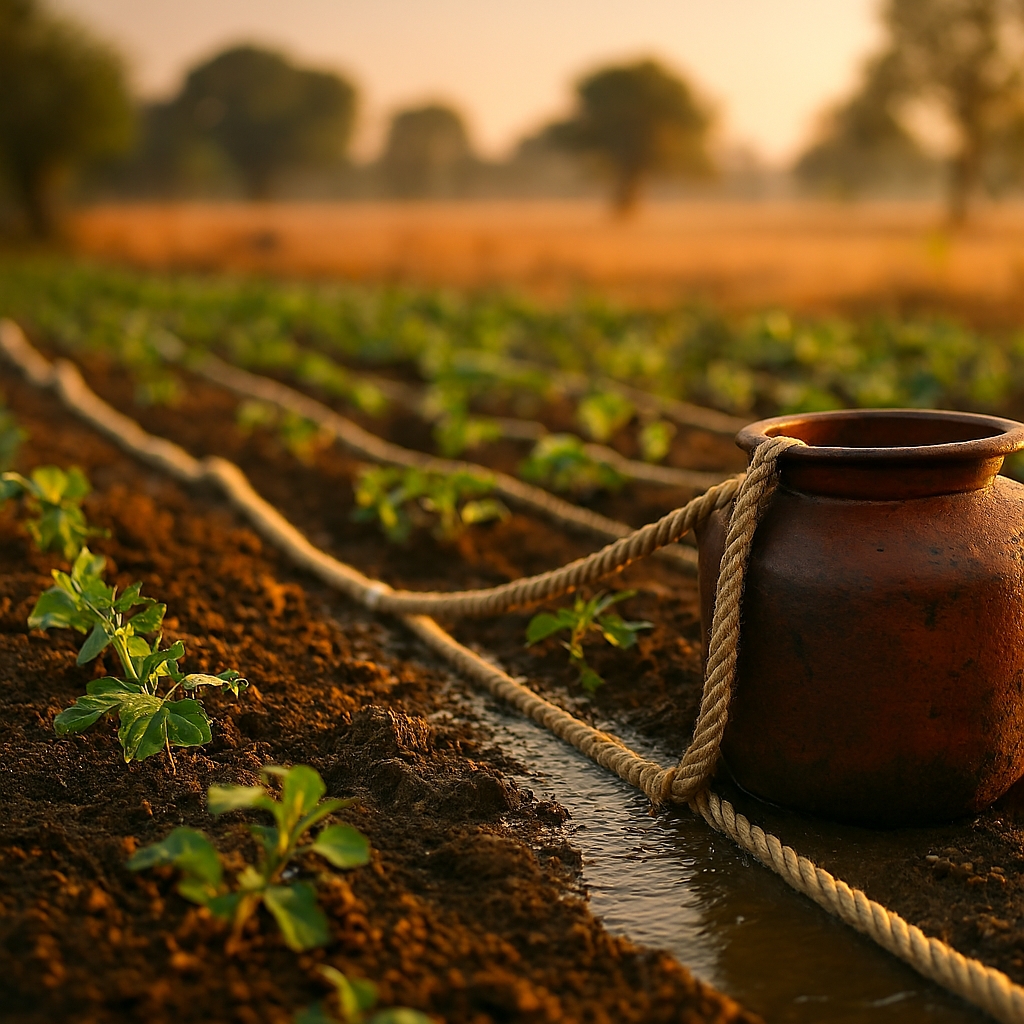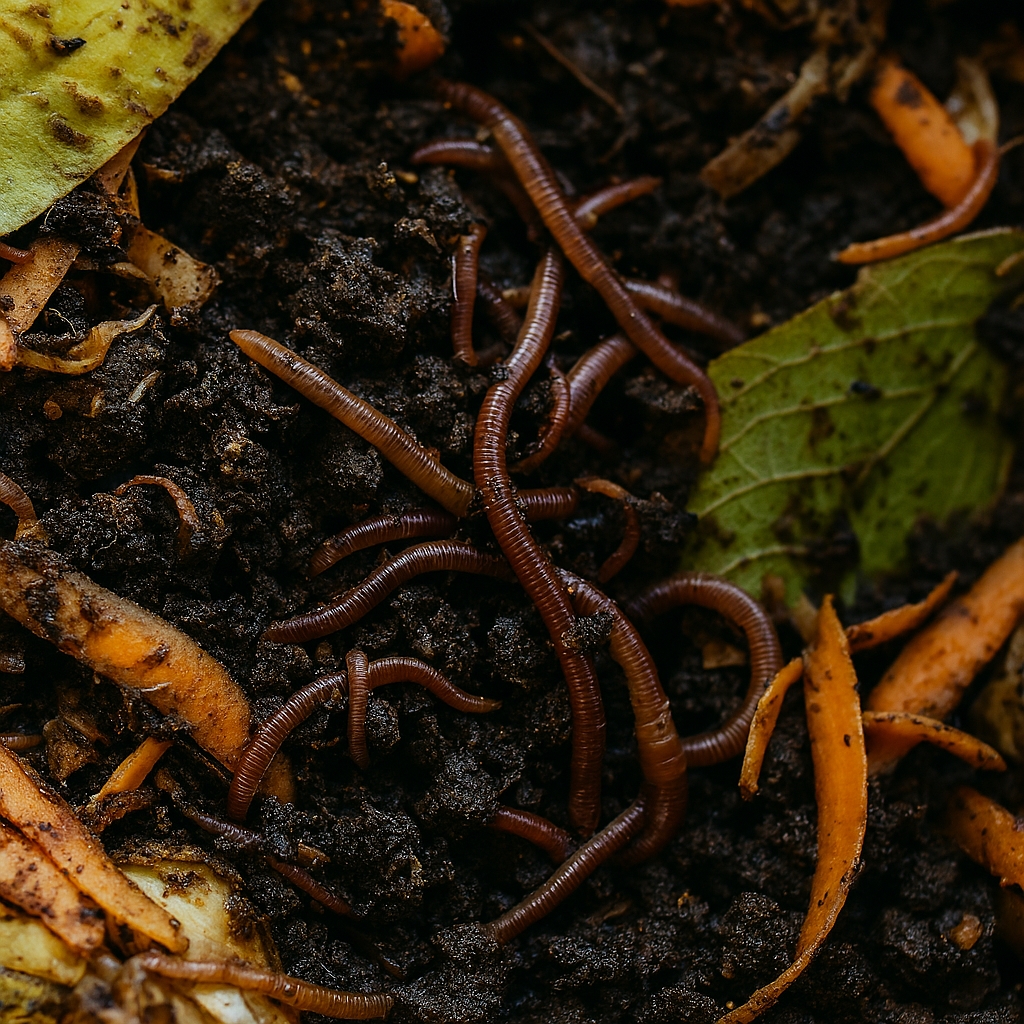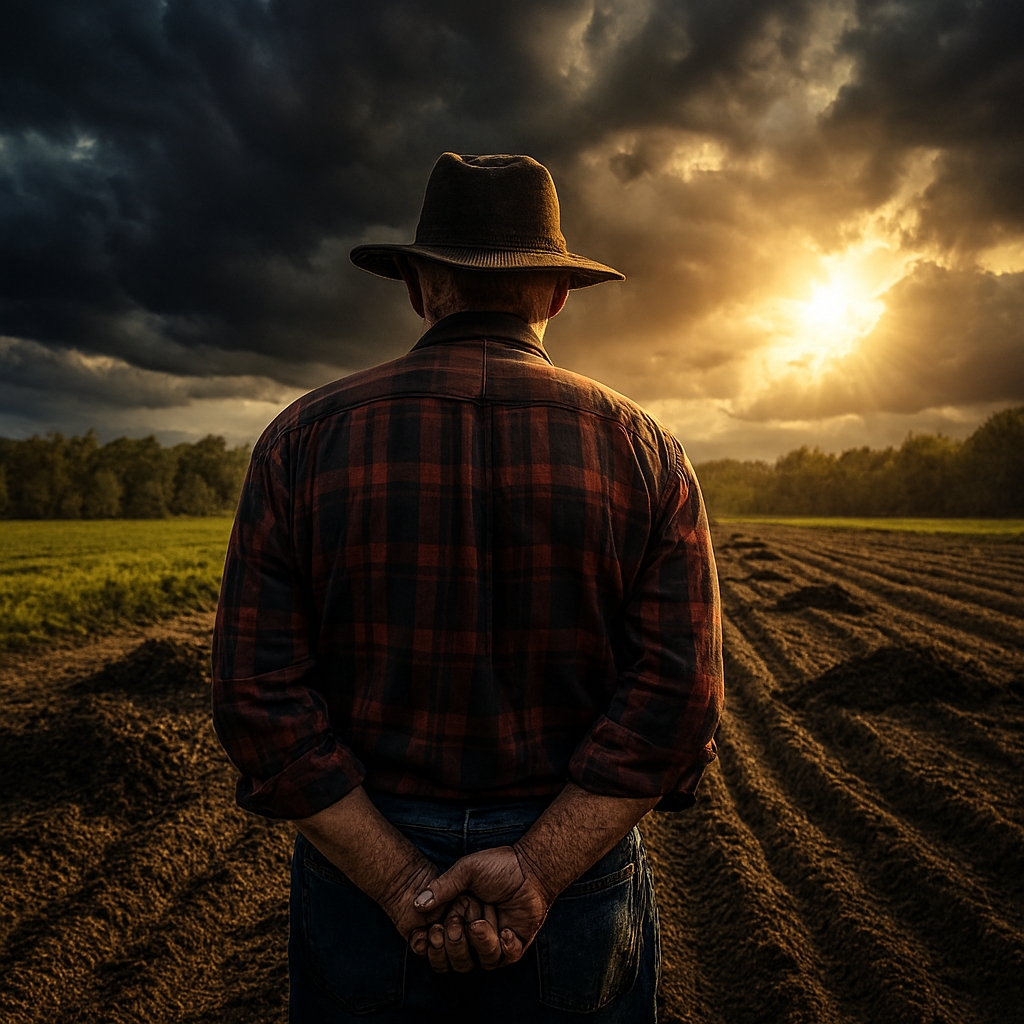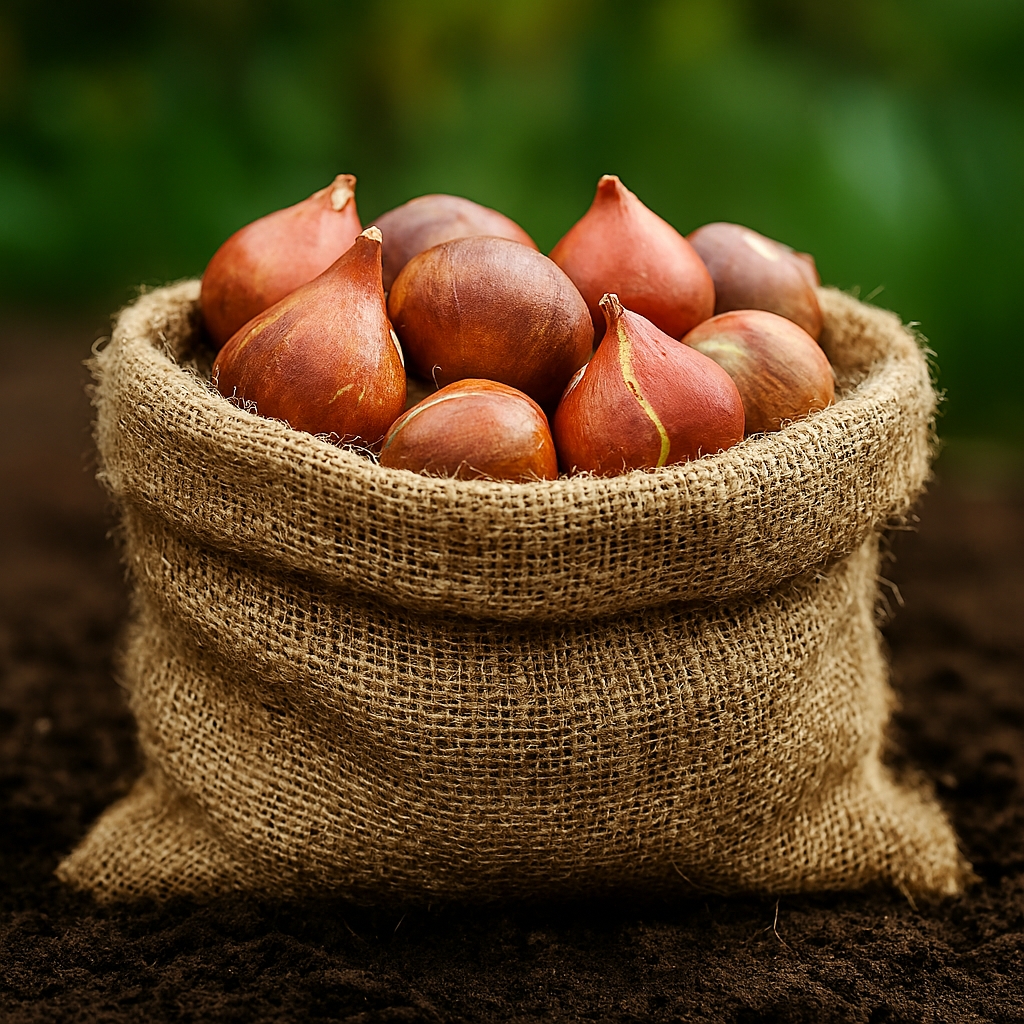Using Strings And Ropes For Watering Plants And Enhancing Ecology In Larger Plots Of Land
Using Rope For Watering Plants – Simple Materials For Complex Ecological Needs
Strings and ropes, often overlooked as everyday items, can become powerful tools in sustainable water management. By harnessing their absorbent qualities and structural versatility, they can transport water across gardens, farms, and ecological restoration sites. This approach relies on capillary action, where water moves along fibers, and gravity, where ropes can guide flow across distances. Unlike costly irrigation systems, strings and ropes provide affordable, adaptable solutions. They can be scaled for small household gardens or large agricultural plots. Their use also reduces water waste, supports soil health, and encourages biodiversity. Communities benefit from accessible methods that strengthen resilience against drought.

Scientific Principles – Capillary Action And Gravity Flow
Strings absorb water and transport it through capillary action. Ropes, depending on thickness and material, can channel water using both absorption and gravity. Cotton and jute are highly effective due to their natural fibers. Synthetic ropes may resist water movement but can still guide flow when positioned correctly. The combination of strings and ropes allows for flexible irrigation design. Thin strings suit delicate plants, while thicker ropes serve larger plots. Understanding these principles ensures efficient water distribution. This method mimics natural processes found in plant roots. It is a practical way to integrate science into everyday gardening.
| Material Type | Water Absorption | Durability | Cost | Best Use |
|---|---|---|---|---|
| Cotton String | High | Medium | Low | Small gardens |
| Jute Rope | High | High | Low | Larger plots |
| Hemp Rope | Medium | High | Medium | Ecological restoration |
| Nylon Rope | Low | High | Medium | Gravity flow systems |
| Polyester Rope | Low | High | Medium | Structural support |
Practical Setup – Combining Strings And Ropes
To establish a system, a reservoir is placed near the plants. Strings are submerged in the water and extended into the soil. Ropes can be tied to containers and stretched across plots to guide water flow. This dual system ensures both absorption and directional control. Placement is critical for even distribution. Strings provide gradual moisture, while ropes deliver larger volumes. Together, they reduce evaporation compared to surface watering. Maintenance involves replacing worn fibers and monitoring soil moisture. The simplicity makes it accessible for households and communities.
- Place reservoir near plants
- Submerge strings in water source
- Extend strings into soil near roots
- Tie ropes to containers for directional flow
- Stretch ropes across plots for coverage
- Adjust thickness based on plant type
- Monitor soil moisture regularly
- Replace worn fibers periodically
- Combine strings and ropes for efficiency
- Encourage community adoption
Environmental Benefits – Conserving Resources And Supporting Biodiversity
Strings and ropes reduce water waste by delivering moisture directly to roots. This prevents runoff and evaporation. Soil health improves as flooding is avoided. Balanced moisture supports nutrient retention. Biodiversity thrives when habitats remain stable. Communities benefit from reduced costs and ecological resilience. This method aligns with sustainable agriculture practices. It complements rainwater harvesting and mulching. Together, these approaches strengthen ecological sustainability.
| Benefit | Ecological Impact | Long-Term Value |
|---|---|---|
| Water Efficiency | Reduces waste | Conserves resources |
| Soil Health | Prevents erosion | Improves fertility |
| Biodiversity | Supports habitats | Strengthens ecosystems |
| Cost Reduction | Affordable setup | Accessible for communities |
| Climate Resilience | Adapts to drought | Enhances sustainability |
Garden Applications – Household Adaptations
In home gardens, strings and ropes provide affordable alternatives to sprinklers. They are particularly useful for potted plants and raised beds. Strings deliver gradual moisture, while ropes can connect multiple containers. This can help prevent root rot and supports healthy growth. Gardeners can experiment with different fibers. Cotton suits vegetables, while jute supports flowering plants. Maintenance is minimal, requiring occasional replacement. Urban gardeners benefit from space-efficient designs. By adopting this method, households contribute to ecological conservation. It also fosters awareness of sustainable practices.
- Suitable for potted plants
- Effective in raised beds
- Prevents overwatering
- Connects multiple containers
- Encourages experimentation with fibers
- Supports vegetable growth
- Enhances flowering plant health
- Ideal for urban gardening
- Promotes ecological awareness
- Strengthens household sustainability
Agricultural Applications – Scaling Up With Ropes
Farmers can adapt strings and ropes for larger plots. Reservoirs can be scaled to meet crop demands. Ropes distribute water evenly across rows. Strings provide gradual moisture to individual plants. This reduces reliance on expensive irrigation systems. It is particularly beneficial in drought-prone regions. Farmers can integrate ropes with mulching to retain moisture. The method supports crop resilience and yield. Communities benefit from improved food security. Strings and ropes thus hold promise for sustainable agriculture.
| Application | Benefit | Cost Savings | Ecological Impact |
|---|---|---|---|
| Crop Rows | Even distribution | High | Supports soil health |
| Orchards | Gradual watering | Medium | Maintains biodiversity |
| Vineyards | Controlled irrigation | Medium | Reduces runoff |
| Drought Regions | Reliable moisture | High | Enhances resilience |
| Community Farms | Affordable setup | High | Strengthens sustainability |
Ecological Restoration – Ropes As Lifelines
Strings and ropes can aid ecological restoration projects. They provide controlled moisture to newly planted vegetation. This supports survival rates in reforestation efforts. Ropes can guide water across degraded soils. Strings maintain balance in wetlands. The method adapts to diverse ecosystems. Restoration projects benefit from cost efficiency. Communities can participate in ecological renewal. This fosters environmental stewardship. Strings and ropes thus contribute to long-term ecological resilience.
- Supports reforestation projects
- Enhances wetland restoration
- Prevents soil erosion
- Improves survival rates of plants
- Reduces infrastructure costs
- Adaptable to diverse ecosystems
- Encourages community participation
- Strengthens environmental stewardship
- Promotes ecological resilience
- Aligns with sustainability goals
Urban Gardening – Strings And Ropes In Limited Spaces
Urban environments often lack access to large irrigation systems, making strings and ropes valuable tools. Balcony gardens, rooftop plots, and community spaces can benefit from their adaptability. Strings can connect small containers to shared reservoirs, ensuring consistent moisture. Ropes can stretch across multiple planters, guiding water flow efficiently. This reduces reliance on tap water and supports sustainable practices. Urban gardeners can experiment with recycled ropes, adding ecological value. The method also encourages collaboration in community gardens. It fosters awareness of resource conservation. By integrating strings and ropes, urban spaces become greener and more resilient.
| Application | Benefit | Cost | Ecological Impact |
|---|---|---|---|
| Balcony Gardens | Consistent moisture | Low | Supports plant survival |
| Rooftop Plots | Efficient water flow | Medium | Reduces heat island effect |
| Community Gardens | Shared reservoirs | Low | Encourages collaboration |
| Container Plants | Prevents root rot | Low | Improves soil health |
| Vertical Gardens | Adaptable irrigation | Medium | Enhances biodiversity |
Climate Adaptation – Strings And Ropes Against Drought
Drought conditions challenge traditional irrigation systems. Strings and ropes provide low-cost resilience. They deliver water directly to roots, minimizing waste. Ropes can guide water from rainwater tanks to crops. Strings ensure gradual release, preventing overwatering. This method adapts to fluctuating rainfall patterns. Farmers and gardeners benefit from reduced dependency on external supplies. Communities strengthen food security through sustainable practices. Climate adaptation requires affordable solutions, and strings and ropes meet this need. Their simplicity makes them accessible worldwide.
- Reduces water waste
- Provides resilience against drought
- Delivers moisture directly to roots
- Guides water from rainwater tanks
- Prevents overwatering
- Adapts to rainfall variability
- Strengthens food security
- Affordable for communities
- Accessible worldwide
- Supports climate adaptation strategies
Cultural Traditions – Ropes In Agricultural Heritage
Throughout history, ropes have played roles in farming and water management. Ancient communities used woven fibers to transport water. Strings and ropes were integral to early irrigation practices. These traditions highlight the ingenuity of simple materials. Modern adaptations build on this heritage. By reintroducing ropes into ecological projects, communities honor cultural practices. This strengthens identity and sustainability. Traditional knowledge complements scientific innovation. It fosters respect for ecological balance. Strings and ropes thus bridge past and present in agriculture.
| Tradition | Region | Historical Role | Modern Adaptation |
|---|---|---|---|
| Woven Fibers | Asia | Guided water flow | Rope irrigation |
| Hemp Ropes | Europe | Agricultural binding | Moisture transport |
| Jute Strings | South America | Plant support | Gradual watering |
| Cotton Fibers | Africa | Household irrigation | Garden applications |
| Natural Twine | Global | Binding crops | Sustainable irrigation |
Technological Innovations – Enhancing Rope Irrigation
Modern technology enhances the effectiveness of strings and ropes. Coated fibers can resist decay while maintaining absorbency. Smart ropes embedded with sensors monitor moisture levels. Strings can be combined with drip systems for precision. Innovations reduce maintenance and increase efficiency. Communities benefit from affordable yet advanced solutions. Technology bridges traditional practices with modern needs. Farmers can integrate ropes into automated systems. Gardeners can experiment with hybrid designs. Innovation ensures long-term sustainability.
- Coated fibers resist decay
- Smart ropes monitor moisture
- Strings combine with drip systems
- Innovations reduce maintenance
- Increase efficiency in irrigation
- Affordable advanced solutions
- Bridges tradition with modern needs
- Integrates into automated systems
- Encourages experimentation
- Ensures sustainability

Community Case Studies – Shared Rope Irrigation Projects
Communities worldwide experiment with rope irrigation. Shared reservoirs connect households through ropes. This fosters collaboration and resource sharing. Case studies show improved crop yields and reduced costs. Ropes provide resilience in drought-prone regions. Strings support household gardens, strengthening food security. Communities adapt designs to local conditions. Shared projects encourage ecological awareness. They also build social bonds. Rope irrigation thus becomes both ecological and social innovation.
| Case Study | Location | Outcome | Community Benefit |
|---|---|---|---|
| Shared Reservoirs | India | Improved crop yields | Resource sharing |
| Household Gardens | Africa | Strengthened food security | Affordable irrigation |
| Community Farms | South America | Reduced costs | Collaboration |
| Urban Plots | Europe | Increased resilience | Ecological awareness |
| Reforestation Projects | Australia | Higher survival rates | Environmental stewardship |
Soil Management – Strings And Ropes Supporting Fertility
Healthy soil is essential for plant growth. Strings and ropes deliver water gradually, preserving soil structure. Flooding is avoided, preventing erosion. Nutrients remain intact, supporting fertility. Moisture balance encourages microbial activity. Farmers benefit from improved crop resilience. Gardeners see healthier plants with stronger roots. Soil management aligns with ecological sustainability. Strings and ropes thus contribute to long-term fertility. Communities gain from improved agricultural outcomes.
- Preserves soil structure
- Prevents erosion
- Retains nutrients
- Encourages microbial activity
- Improves crop resilience
- Strengthens plant roots
- Aligns with sustainability
- Contributes to fertility
- Supports agricultural outcomes
- Benefits communities
Large-Scale Projects – Ropes In Agricultural Infrastructure
Ropes can be integrated into large-scale agricultural infrastructure. Reservoirs connect to ropes stretched across fields. This guides water efficiently to crops. Strings provide localized moisture for delicate plants. Large-scale projects reduce reliance on costly irrigation systems. Farmers benefit from affordable solutions. Communities gain resilience against climate challenges. Infrastructure adapts to diverse environments. Ropes complement existing systems, enhancing efficiency. This strengthens food security. Large-scale rope irrigation thus supports sustainable agriculture.
| Infrastructure | Role | Benefit | Ecological Impact |
|---|---|---|---|
| Reservoirs | Connect to ropes | Efficient water flow | Conserves resources |
| Fields | Guided irrigation | Affordable | Supports soil health |
| Orchards | Localized moisture | Medium cost | Maintains biodiversity |
| Vineyards | Controlled watering | Medium cost | Reduces runoff |
| Community Farms | Shared systems | High savings | Strengthens sustainability |
Biodiversity Support – Strings And Ropes As Ecological Allies
Balanced moisture supports diverse habitats. Strings and ropes deliver water gradually, maintaining ecological balance. This prevents habitat loss during drought. Biodiversity thrives when ecosystems remain stable. Communities benefit from resilient environments. Farmers see improved pollination and crop yields. Gardeners enjoy healthier ecosystems. Strings and ropes thus act as ecological allies. They strengthen resilience against climate change. Biodiversity support aligns with global sustainability goals.
- Maintains ecological balance
- Prevents habitat loss
- Supports biodiversity
- Strengthens resilience
- Improves pollination
- Enhances crop yields
- Encourages healthy ecosystems
- Acts as ecological allies
- Aligns with sustainability goals
- Benefits communities
Water Harvesting – Integrating Strings And Ropes With Rain Systems
Rainwater harvesting becomes more effective when combined with strings and ropes. Reservoirs can collect rainfall, and ropes can guide water directly into soil beds. Strings absorb and release moisture gradually, ensuring plants benefit long after rainfall ends. This reduces dependency on municipal water supplies. Communities can design simple systems using recycled ropes. Gardeners can connect rooftop tanks to raised beds with ropes. Farmers can scale systems to cover entire fields. This integration strengthens resilience against unpredictable rainfall. It also promotes ecological awareness. Rainwater harvesting with strings and ropes is not a ne widea but both are practical and sustainable.
| Integration Method | Benefit | Cost | Ecological Impact |
|---|---|---|---|
| Rooftop Tanks + Ropes | Directs water to beds | Low | Reduces tap water use |
| Reservoirs + Strings | Gradual release | Low | Supports soil health |
| Community Tanks + Ropes | Shared irrigation | Medium | Encourages collaboration |
| Rain Barrels + Strings | Household gardens | Low | Improves plant survival |
| Large Farms + Ropes | Field coverage | Medium | Strengthens resilience |
Educational Projects – Teaching Sustainability With Strings And Ropes
Schools and community groups can use strings and ropes to teach sustainability. Simple experiments demonstrate capillary action. Students can observe how strings transport water from containers to soil. Ropes can be used to connect multiple pots, showing directional flow. These projects encourage curiosity and ecological awareness. They highlight the importance of resource conservation. Teachers can integrate lessons into science and environmental studies. Communities can host workshops on rope irrigation. Educational projects foster innovation and collaboration. They empower future generations to adopt sustainable practices. Strings and ropes thus become tools for learning and ecological action.
- Demonstrates capillary action
- Shows directional water flow
- Encourages ecological awareness
- Highlights resource conservation
- Integrates into science lessons
- Supports environmental education
- Hosts community workshops
- Fosters innovation
- Empowers future generations
- Promotes sustainable practices

Recycling And Reuse – Sustainable Rope Irrigation Materials
Recycling old ropes and strings reduces waste while supporting irrigation. Cotton and jute ropes from packaging can be repurposed. Strings from household items can serve garden needs. Communities benefit from reduced costs and ecological awareness. Recycling aligns with circular economy principles. Farmers can reuse ropes from agricultural supplies. Gardeners can repurpose household fibers. This reduces reliance on new materials. It also strengthens sustainability. Recycling and reuse make rope irrigation even more environmentally friendly.
| Material Source | Reuse Potential | Cost Savings | Ecological Benefit |
|---|---|---|---|
| Packaging Ropes | High | Medium | Reduces waste |
| Household Strings | Medium | Low | Supports gardens |
| Agricultural Supplies | High | High | Strengthens sustainability |
| Textile Waste | Medium | Medium | Encourages recycling |
| Community Projects | High | High | Promotes awareness |
Innovation In Design – Creative Rope Irrigation Systems
Creative designs enhance rope irrigation efficiency. Spiral ropes can distribute water evenly across circular plots. Vertical ropes can support hanging gardens. Strings can be woven into mats for soil coverage. Innovative designs reduce water waste. Communities can experiment with hybrid systems. Farmers can adapt designs to crop needs. Gardeners can create artistic irrigation structures. Innovation fosters ecological resilience. It also encourages collaboration. Rope irrigation thus becomes both functional and creative.
- Spiral ropes distribute water evenly
- Vertical ropes support hanging gardens
- Strings woven into mats cover soil
- Designs reduce water waste
- Communities experiment with hybrids
- Farmers adapt to crop needs
- Gardeners create artistic systems
- Innovation fosters resilience
- Encourages collaboration
- Combines function with creativity
Case For Equity – Accessible Irrigation With Strings And Ropes
Equity in agriculture requires affordable solutions. Strings and ropes provide accessible irrigation for marginalized communities. They reduce dependency on costly infrastructure. This empowers small-scale farmers. Household gardens benefit from low-cost systems. Communities gain resilience against climate challenges. Equity ensures all groups can participate in sustainability. Strings and ropes align with inclusive ecological practices. They strengthen food security. Accessible irrigation supports both social and environmental justice.
| Equity Factor | Benefit | Community Impact | Ecological Value |
|---|---|---|---|
| Affordability | Reduces costs | Empowers small farmers | Strengthens sustainability |
| Accessibility | Simple setup | Supports households | Improves resilience |
| Inclusivity | Encourages participation | Builds equity | Promotes awareness |
| Resilience | Adapts to drought | Strengthens communities | Conserves resources |
| Justice | Aligns with fairness | Supports marginalized groups | Enhances ecology |
Future Outlook – Strings And Ropes In Global Sustainability
The future of irrigation may rely on simple materials. Strings and ropes offer scalable, adaptable solutions. They align with global sustainability goals. Communities worldwide can adopt these methods. Farmers benefit from resilience against climate change. Gardeners contribute to ecological awareness. Innovations will enhance efficiency. Recycling strengthens environmental impact. Strings and ropes symbolize simplicity driving transformation. Their role in sustainability will continue to grow.
- Scalable solutions for irrigation
- Adaptable across environments
- Aligns with sustainability goals
- Supports global communities
- Strengthens resilience against climate change
- Encourages ecological awareness
- Enhances efficiency through innovation
- Strengthens environmental impact
- Symbolizes simplicity in transformation
- Role will continue to grow
Conclusion – Strings And Ropes As Pathways To Ecological Renewal
Strings and ropes, though simple, embody ecological innovation. Their ability to transport and guide water supports gardens, farms, and restoration projects. They conserve resources, strengthen soil health, and encourage biodiversity. Communities benefit from affordable, adaptable solutions. This method bridges tradition and modern innovation. It aligns with climate adaptation strategies. By adopting strings and ropes, individuals contribute to ecological resilience. The practice fosters awareness and collaboration. Strings and ropes thus symbolize simplicity driving sustainability.
Join The Discussion – Share Your Knowledge
The exploration of strings and ropes in irrigation invites community dialogue. How can households, farmers, and ecological projects integrate this method? What innovations can enhance its effectiveness? Communities can adapt practices to local conditions. This fosters resilience and sustainability. Readers are invited to contribute ideas and stories. Together, we can refine and expand ecological solutions. Join the conversation to shape sustainable futures.
#SustainableGardening #WaterConservation #EcologicalRestoration #StringAndRopeIrrigation #CommunityResilience #SoilHealth #ClimateAdaptation #BiodiversitySupport #AffordableFarming #EcoInnovation













Leave a Reply